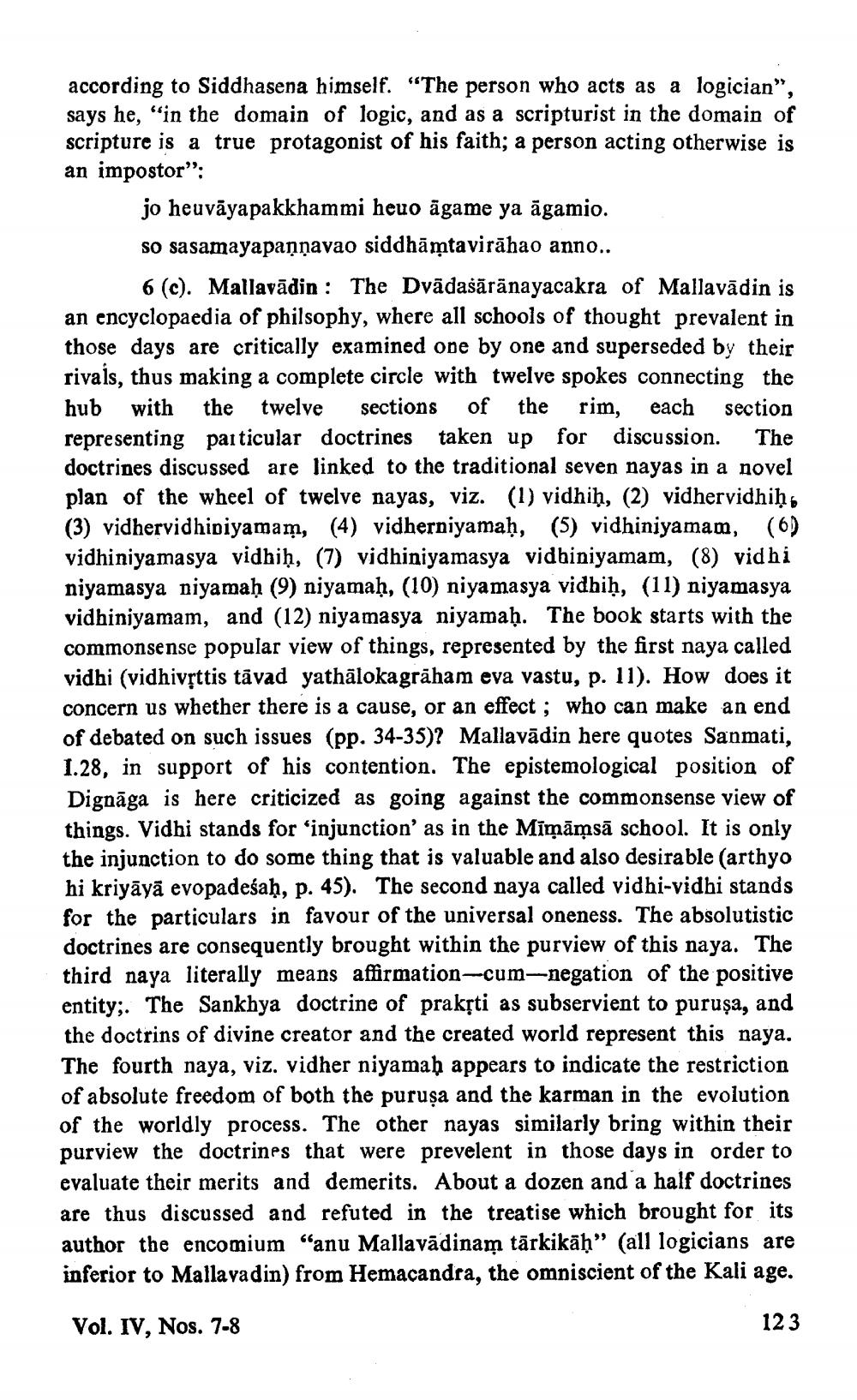________________
according to Siddhasena himself. “The person who acts as a logician", says he, "in the domain of logic, and as a scripturist in the domain of scripture is a true protagonist of his faith; a person acting otherwise is an impostor":
jo heuvāyapakkhammi heuo āgame ya āgamio. so sasamayapaņņavao siddhāmtavirāhao anno..
6 (c). Mallavādin : The Dvādasārānayacakra of Mallavādin is an encyclopaedia of philsophy, where all schools of thought prevalent in those days are critically examined one by one and superseded by their rivals, thus making a complete circle with twelve spokes connecting the hub with the twelve sections of the rim, each section representing particular doctrines taken up for discussion. The doctrines discussed are linked to the traditional seven nayas in a novel plan of the wheel of twelve nayas, viz. (1) vidhiḥ, (2) vidhervidhiḥ, (3) vidhervidhiniyamam, (4) vidherniyamaḥ, (5) vidhiniyamam, (6) vidhiniyamasya vidhiḥ, (7) vidhiniyamasya vidhiniyamam, (8) vidhi niyamasya niyamaḥ (9) niyamaḥ, (10) niyamasya vidhiḥ, (11) niyamasya vidhiniyamam, and (12) niyamasya niyamaḥ. The book starts with the commonsense popular view of things, represented by the first naya called vidhi (vidhivșttis tävad yathālokagrāham eva vastu, p. 11). How does it concern us whether there is a cause, or an effect ; who can make an end of debated on such issues (pp. 34-35)? Mallavādin here quotes Sanmati, 1.28, in support of his contention. The epistemological position of Dignāga is here criticized as going against the commonsense view of things. Vidhi stands for 'injunction' as in the Mīmāmsā school. It is only the injunction to do some thing that is valuable and also desirable (arthyo hi kriyāyā evopadeśaḥ, p. 45). The second naya called vidhi-vidbi stands for the particulars in favour of the universal oneness. The absolutistic doctrines are consequently brought within the purview of this naya. The third naya literally means affirmation-cum-negation of the positive entity;. The Sankhya doctrine of praksti as subservient to puruşa, and the doctrins of divine creator and the created world represent this naya. The fourth naya, viz. vidher niyamaḥ appears to indicate the restriction of absolute freedom of both the puruşa and the karman in the evolution of the worldly process. The other nayas similarly bring within their purview the doctrines that were prevelent in those days in order to evaluate their merits and demerits. About a dozen and a half doctrines are thus discussed and refuted in the treatise which brought for its author the encomium "anu Mallavādinam tārkikāḥ" (all logicians are inferior to Mallavadin) from Hemacandra, the omniscient of the Kali age.
Vol. IV, Nos. 7-8
123




